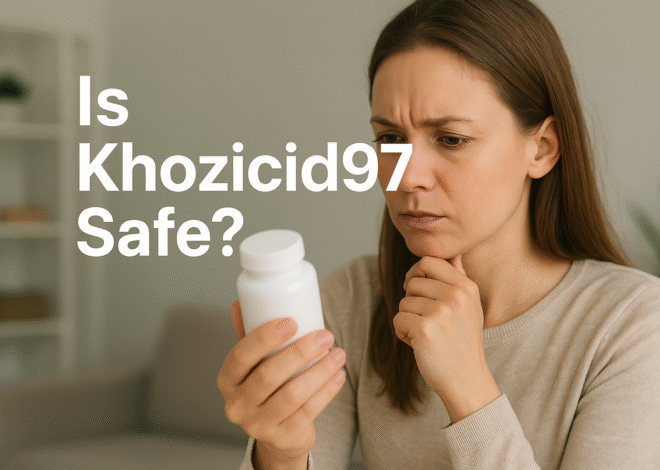
Boylecheloid: Unraveling the Mysteries of this Unique Skin Condition
Introduction to Boylecheloid
Boylecheloid is a unique skin condition that has garnered attention in dermatological studies due to its distinct characteristics and symptoms. Although not as widely known as some other skin issues, understanding Boylecheloid is essential for proper diagnosis and treatment. Classified within the realm of dermatological conditions, Boylecheloid is primarily characterized by its thickened skin lesions, which often appear in specific areas of the body. The condition is derived from the interplay of genetic and environmental factors, causing alterations to the skin’s texture and appearance.
The origins of Boylecheloid can be traced back to various sources, including hereditary factors and possibly dermatological irritants. This condition exhibits a tendency to manifest during puberty or in individuals with a family history of similar skin ailments. The term “boylecheloid” itself is rooted in the observation of its resemblance to other more common skin conditions, such as keloids, which are raised scars resulting from excessive collagen production during wound healing. However, unlike keloids, Boylecheloid lesions are typically more localized and may have different triggers, making it important to differentiate between these conditions for appropriate management.
Clinically, Boylecheloid is categorized with specific criteria, including its appearance, growth patterns, and responsiveness to treatment options. Patients may experience discomfort or changes in skin color, often leading to self-consciousness. Distinct from other similar skin conditions such as psoriasis or eczema, Boylecheloid requires a unique approach to care. Understanding the nuances of Boylecheloid helps patients grasp their condition and facilitates informed discussions with dermatologists. As we explore this topic further, it is crucial to maintain an emphasis on the individual characteristics of Boylecheloid that set it apart from other dermatological issues, thereby empowering those affected with a well-rounded perspective.
Symptoms and Diagnosis of Boylecheloid
Boylecheloid is a unique skin condition that manifests with several distinctive symptoms, which are crucial for accurate diagnosis. Typically, individuals with Boylecheloid present with raised, thickened patches of skin, often characterized by their shiny, smooth surface. These lesions usually appear on the extremities, particularly the arms and legs, though they can also affect other areas of the body. The affected skin may cause a range of sensations, from mild itching to discomfort, but it generally remains asymptomatic in terms of pain.
In some cases, the lesions associated with Boylecheloid can be mistaken for other dermatological conditions, such as psoriasis or lichen planus, due to their similar visual characteristics. This underscores the importance of a comprehensive evaluation by healthcare professionals. Additionally, it is not uncommon for individuals with Boylecheloid to report changes in skin texture, leading to an increase in skin sensitivity, which can further complicate recognition.
Diagnosing Boylecheloid involves a multi-faceted approach. Initially, a thorough medical history assessment is conducted, in which the clinician gathers information about the onset of symptoms, any family history of skin conditions, and potential environmental factors that may contribute to the condition. Following the medical history, clinicians typically perform a physical examination, focusing on the appearance and distribution of skin lesions.
In certain cases, dermatologists may recommend additional tests, such as a skin biopsy, to rule out other skin diseases and confirm the diagnosis of Boylecheloid. By closely examining the histological structure of the skin, healthcare professionals can differentiate Boylecheloid from other similar conditions. This combination of patient history, clinical examination, and histopathological analysis is crucial for a definitive diagnosis and effective management of this unique skin condition.

Treatment Options for Boylecheloid
Managing Boylecheloid largely depends on the severity of the condition and the symptoms exhibited by the individual. Treatment options can be classified into non-invasive and invasive methods, each with specific benefits and potential drawbacks.
Non-invasive treatments often serve as the first line of defense for individuals affected by Boylecheloid. Topical treatments may include corticosteroid creams that aim to reduce inflammation and itching associated with the condition. Other topical agents, such as tacrolimus ointment, have shown promise in not only managing symptoms but also in potentially reducing the appearance of skin lesions. Over-the-counter moisturizers can also play a vital role in maintaining skin hydration and preventing exacerbation of the symptoms.
In addition to topical therapies, lifestyle changes can significantly affect the management of Boylecheloid. For example, avoiding irritants and allergens, as well as utilizing gentle skin care products, can soothe the skin and minimize flare-ups. Moreover, a balanced diet rich in vitamins and minerals supports overall skin health. Staying well-hydrated is essential, as effective hydration can enhance skin elasticity and resilience.
For individuals who do not respond to non-invasive treatments, invasive options may be considered. Procedures such as cryotherapy, which involves freezing the affected areas, can help eliminate lesions. Surgical interventions, such as excision or laser therapy, may also be beneficial for more severe cases. While these methods can provide effective results, they may come with risks such as scarring or infection.
It is crucial to note that the effectiveness and potential side effects of these treatments can vary from person to person. Therefore, individuals diagnosed with Boylecheloid should consult a healthcare professional to develop a personalized treatment plan that aligns with their specific needs and health status.
Living with Boylecheloid: Tips and Support
Living with boylecheloid can be a challenging experience, as the condition may impact both physical appearance and emotional well-being. However, there are several effective strategies that individuals can adopt to manage their symptoms and maintain a positive quality of life. One of the most beneficial approaches is to establish a comprehensive skincare routine tailored to the unique needs associated with boylecheloid. This might include using gentle cleansers, moisturizers specifically designed for sensitive skin, and occasional exfoliation to promote skin health. Maintaining hydration and a balanced diet can also support skin condition positively.
Caring for one’s mental health is equally crucial when living with boylecheloid. Individuals may experience a range of emotions, from frustration to self-consciousness. Practicing mindfulness techniques such as meditation or yoga can help cultivate a sense of calm and acceptance. Additionally, reaching out to mental health professionals for support can be instrumental in processing any emotional challenges that arise.
Connecting with support groups, both in-person and online, can create a sense of community and reduce feelings of isolation. These groups provide an opportunity to share experiences, exchange tips about managing boylecheloid, and find camaraderie among those facing similar challenges. Online forums can also serve as valuable resources, allowing for the exchange of ideas and strategies for coping with the condition. It is also imperative to maintain open communication with healthcare providers to ensure personalized care. Regular consultations can lend insight into new treatment options and allow for adjustments in care strategies as necessary.
By adopting a proactive approach to both physical and mental health, individuals living with boylecheloid can foster resilience and enhance their overall well-being. Embracing support systems and prioritizing self-care will empower individuals to navigate the complexities of their condition more effectively.

